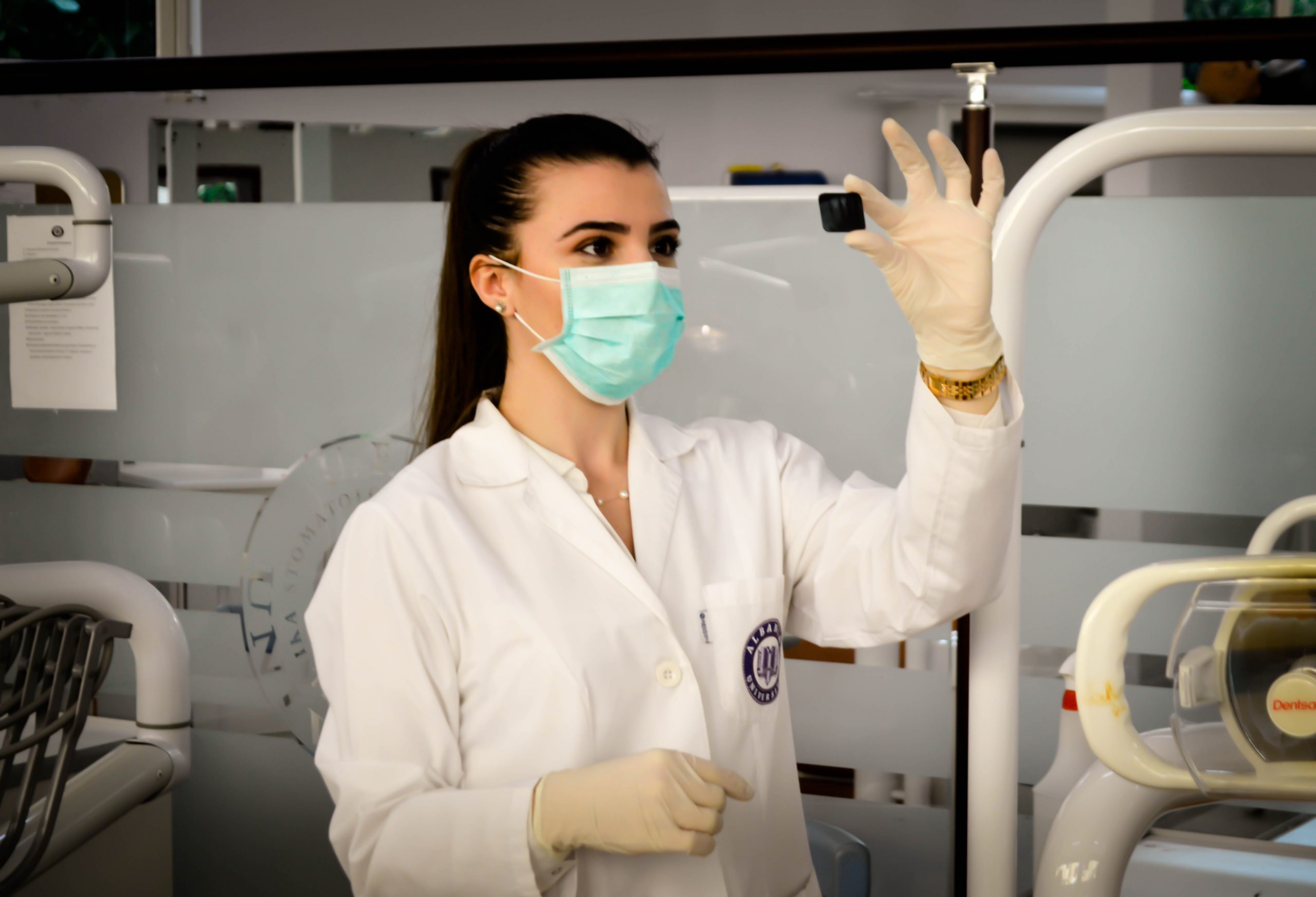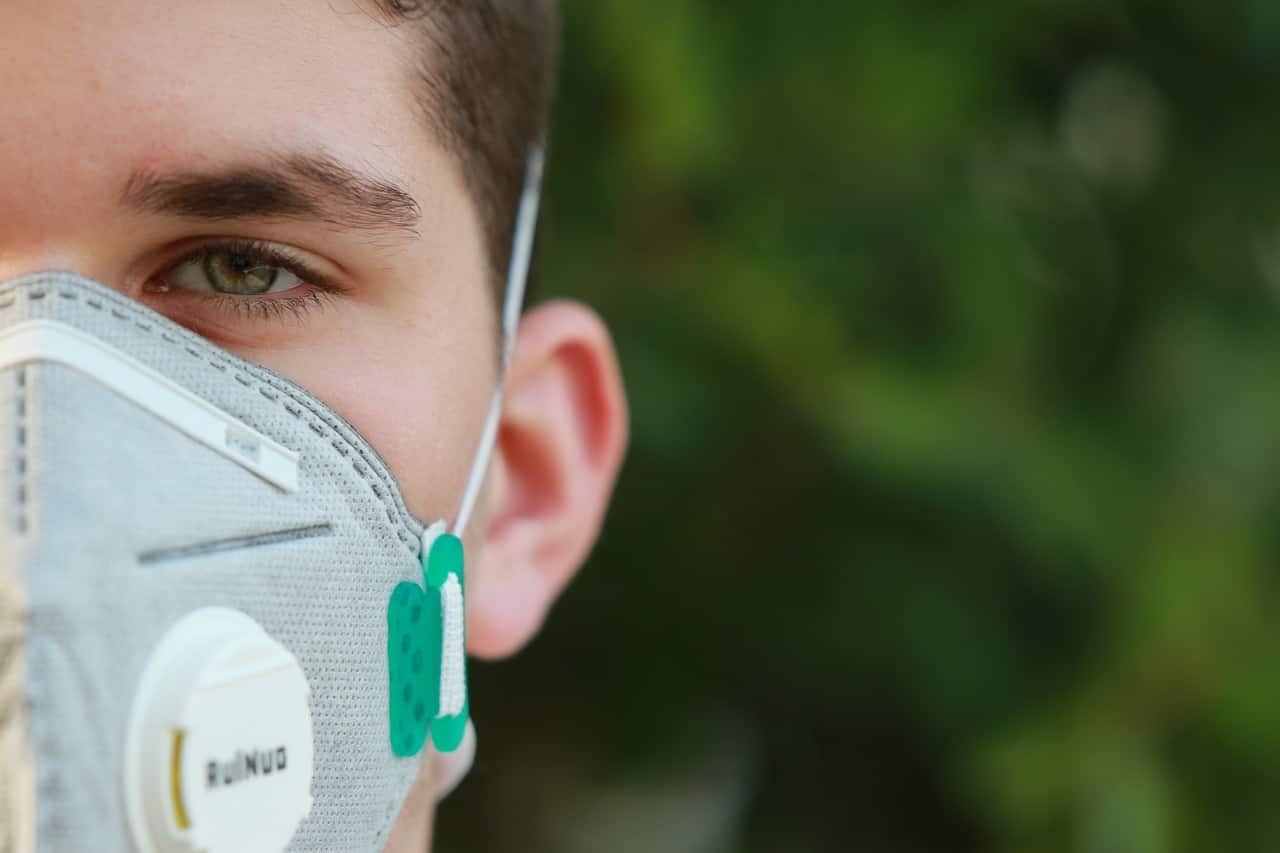
The highly infectious SARS-CoV-2 virus is transmitted by droplets that are released into the environment when people speak, sneeze, or cough. When we move around in public places, these droplets can land on our clothes. And it is through our clothes that they can also end up contaminating our hands and objects. However, this is far more disastrous in the healthcare sector. Wherever medical staff is fighting the virus on a daily basis, textiles are all over the place.
The SARS-CoV-2 virus remains active on textiles for up to two days, Carlo Centonze explains. He is CEO of the Swiss HeiQ Group. The company is focused on specialized textiles and the CEO is determined to play his part in containing the SARS-CoV-2 virus. His research department developed a new type of antiviral coating for textiles. This destroys bacteria as well as viral envelopes. Examples of viral envelopes are the coronaviruses 229E and SARS-CoV-2, both of which cause COVID-19. Centonze explains further: “Medical equipment is already being coated with antimicrobial substances in order to reduce the risk of infection. Healthcare fabrics have never been coated before, but now there’s a huge demand for it.”
Two groundbreaking technologies.
When we refer to a viral envelope, we mean specifically the genetic material that is ‘enveloped’ – with a layer of fat. In order to destroy the virus, HeiQ Group’s research department combined two groundbreaking technologies: silver and vesicle technology. The silver technology attracts viruses with an opposite charge and inhibits their replication. It does this by binding them permanently to its sulfur compound. The vesicles (liposomes) remove the cholesterol content from the viral envelope within seconds and thereby helps to destroy the virus. Test show that the antiviral effect sets in within two to five minutes.
Antiviral coating
The technology is known under the name of Viroblock NPJ03 and is a viscous mass which is applied to textiles during the final production stage. The coating is being created in cooperation with an industrial partner, the Alchemy Group. Its digitally controlled system combines high precision with high speed. This process is required for critical medical textiles and the speed for the scalability that is required. The system can handle 25 to 50 meters per minute. Demand is high, according to Centonze.
The antiviral coating can be applied to all types of fibers and non-woven fabrics. This opens up a wide range of applications in the medical field alone, such as protective masks, gowns, air filters, curtains, etc. In addition, the virus blocker can also be applied to fabrics for daily wear and interiors. The antiviral effect of washable fabrics has been verified for over 30 gentle laundry cycles. Centonze states that the coating can also be replaced.
30 times more effective
Preliminary tests were carried out involving protective masks made of non-woven fabrics. These are designed to protect the wearer but are also potential carriers of viruses. Because for one thing, they tend to absorb pathogens and for another, they are often handled carelessly, e.g when touched by unwashed hands or placed on contaminated (unclean) surfaces. The test revealed that the protective masks treated with Viroblock NPJ03 show a 99.99 % lower risk of infection compared to untreated protective masks. A 30-fold increase in effectivity was demonstrated in tests with Sars-CoV-2.
Cooperation with competitors
Since the introduction of antiviral coating, the HeiQ Group has been utilizing its full capacity for production. The company operates four manufacturing facilities on three continents and currently produces 145 metric tons per day. Nevertheless, this is still not enough to cover the enormous demand. Centonze therefore resorted to an extraordinary measure: the HeiQ Group is also offering their patented formula to its competitors – free of charge. They are provided with the formula, production protocols, and technical instructions. In return, they undertake to have their treated products tested by licensed testing institutes – so as to safeguard the standards of quality. The first partners are the German CHT Group, the Taiwanese INTEX Group, and the American Piedmont Chemical Group.
“There is no time to lose. We must act now and we must act quickly to provide protective medical textiles that are much more resistant to pathogenic viruses and bacteria. Reducing transmission and infection rates is the only way to quickly reopen our economies and save jobs in the textile industry.” Carlo Centonze, CEO HeiQ Group

Application in medicine, clothing, and interiors
The first masks with the HeiQ Viroblock NPJ03 technology are already on the market. The main customer is the Chinese manufacturer of protective masks Suzhou Bolisi. The American manufacturer Kayser-Roth plans to incorporate the technology in its new product range of Ghluv hand protection. The Italian Albini Group adapted the antiviral coating and offers its products under the Viroformula brand name. The company produces high-quality suit and shirt fabrics and is considered to be one of the largest manufacturers of shirt fabrics – which means it covers the business wear sector. The active ingredients used in the treatment are certified according to the regulated skin- and environmentally friendly and sustainable categories.
Also of interest:
New method for contact-free screening of potential COVID-19 infections




